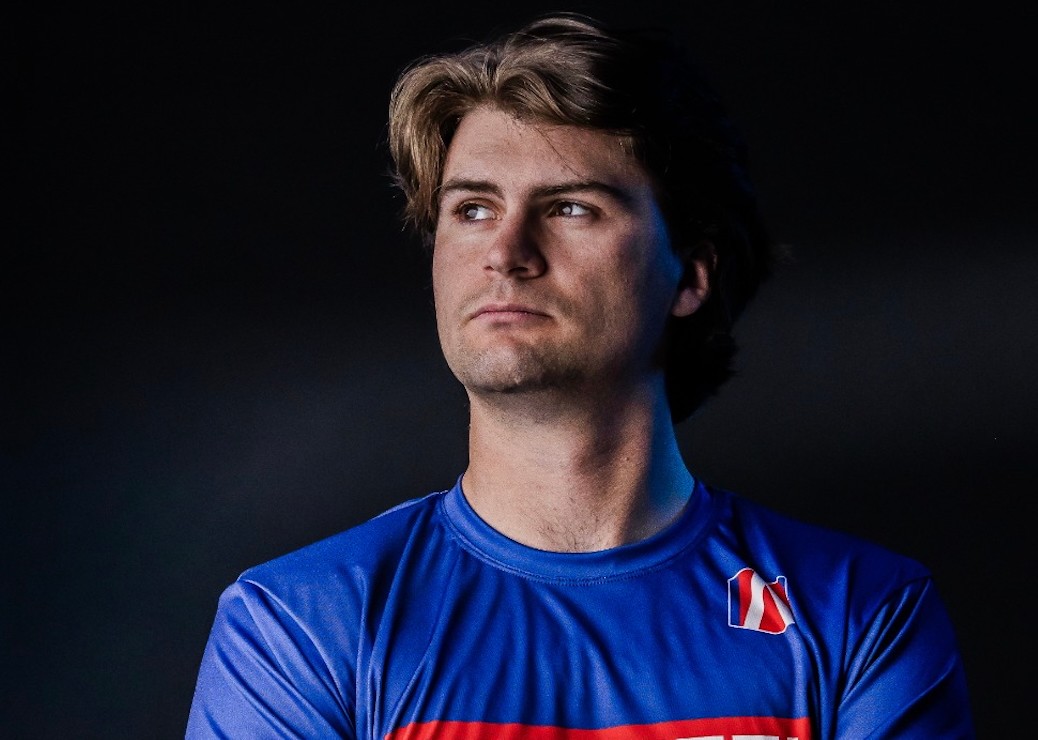IndyCar News: Herta’s High-Stakes Gamble to leave IndyCar to Pursue F1
In September 2025, Colton Herta (pictured) faced the biggest decision of his racing career. At 25, he was IndyCar’s standout talent—a nine-time race winner with Andretti Global, a pole at the Indy 500, and a near-championship in 2023.
–by Mark Cipolloni–
His IndyCar future seemed unbreakable, with a secure contract and a team tailored to his strengths. But Cadillac’s ambitious Formula 1 entry for 2026 offered something irresistible: a shot at becoming the first American F1 race winner since Mario Andretti. To make it happen, Herta had to take a massive risk—leave IndyCar behind to compete in Formula 2, building the super license points needed for F1.
Related Article: F1 Rumor: Herta to step up to F2 to improve enough to be in F1
The Decision: Betting It All
The announcement sent shockwaves through the motorsport world. Andretti Global, his home since 2019, was stunned and scrambled to retain him with enhanced offers. But Herta’s vision was locked on F1. “It’s the ultimate challenge,” he confided to his father, Bryan, himself a former racer.
“Staying in IndyCar is safe, but F1 is where legends are made.”
Colton confirmed he wrestled with the choice. “It was a difficult decision because I know what I have to give up,” he admitted.
“I’m leaving a great team and an incredibly strong championship, where you can celebrate victories on a good day. That’s not the case in Formula 1. You need the right car to be at the front. So it’s a risk for me. But I want to take the opportunity.”
The risks were enormous. F2 is a ruthless arena, filled with ambitious young drivers who’ve honed their skills on European circuits from karting onward. Herta, accustomed to IndyCar’s high-speed ovals and powerful machinery, would be stepping into unfamiliar territory: twitchier cars, intricate tire strategies, and tracks like Monaco and Spa that demand a different kind of precision.
Failure in F2 could derail everything. Without enough super license points, his F1 dream with Cadillac evaporates. And with his IndyCar seat gone, he’d have no fallback—potentially facing a scramble for lesser opportunities in other series or, worse, unemployment in a cutthroat industry. Social media erupted with debate. An X post from an IndyCar insider captured the skepticism: “Herta’s gambling his prime years on F2. If it flops, he’s done.” Even supporters worried aloud: “Bold move, but IndyCar’s where he shines. Why risk it all?”
Speaking on the latest episode of Off Track with Hinch and Rossi, TWG Motorsports boss Dan Towriss said Herta was taking “a big risk” with no guarantee that he will get the Cadillac drive in 2027.

“We have two experienced drivers in the car,” said Towriss.
“I’m confident Colton will get his shot, but he’s got to earn it, right? He’s taking that risk.
“He’s not entitled to that seat, he’s not guaranteed the seat from that standpoint. He’s going over to prove that he belongs in Formula 1.
“I think we could all say that people who don’t belong in Formula 1, it separates it out pretty quickly if it’s not meant to be.”
“We’ve been fortunate to keep Colton at Andretti in the IndyCar team and so now he’s going to pursue that dream in Formula 1,” Towriss added.
“To do that, he’s going to take a pretty big risk. He’s leaving IndyCar, he’s not going directly to Formula 1.
“This is a test and development driver role and so he’s going to be going into F2, he’s going to learn tracks, he’s going to learn tyres.
“Tyres are a big part of that. Very different to IndyCar from that standpoint. So I just couldn’t be more proud of Colton to be willing to take that risk to pursue his dream.”
The F2 Hurdle
Herta has signed with a top F2 team (Prema or Rodin), but the challenge is daunting. European junior formulas reward drivers with years of ladder experience, something Herta lacks despite his IndyCar success.
The F2 car requires finesse over brute force—mastering DRS overtakes, conserving tires through long stints, and navigating the political undercurrents of the paddock. Cadillac, naming him as their test driver while he pursues F2, has made their expectations clear: excel, or we pivot to other talents.
The personal toll adds to the pressure. IndyCar is Herta’s roots—family, friends, and a passionate American fanbase. Relocating to Europe for F2 means cultural shifts, time zones away from home, and facing doubters who see him as an interloper.
Cadillac’s F1 project, while promising, is unproven; a slow start for the team could amplify any F2 struggles. “You’re putting your entire career on the line,” a Cadillac executive told him during contract talks. “Prove you belong.”
The Road to Uncertainty
As Herta wraps up his final IndyCar races this season, the weight of his choice is palpable. He’s diving into endless simulator sessions, studying F2 footage, and adapting his driving style. The upcoming off-season will be grueling, filled with tests and preparation.
Success in F2 could secure his F1 seat, bringing American flair to the global stage and fulfilling a lifelong ambition. But the downside looms large: a subpar season might leave him regretting the stability he abandoned.
In the Andretti garage, Herta stared at his IndyCar one last time, helmet in hand. “No regrets,” he mutters.
The F2 grid awaits—a proving ground that could launch him to stardom or send him crashing back to earth. For Colton Herta, the die is cast.
